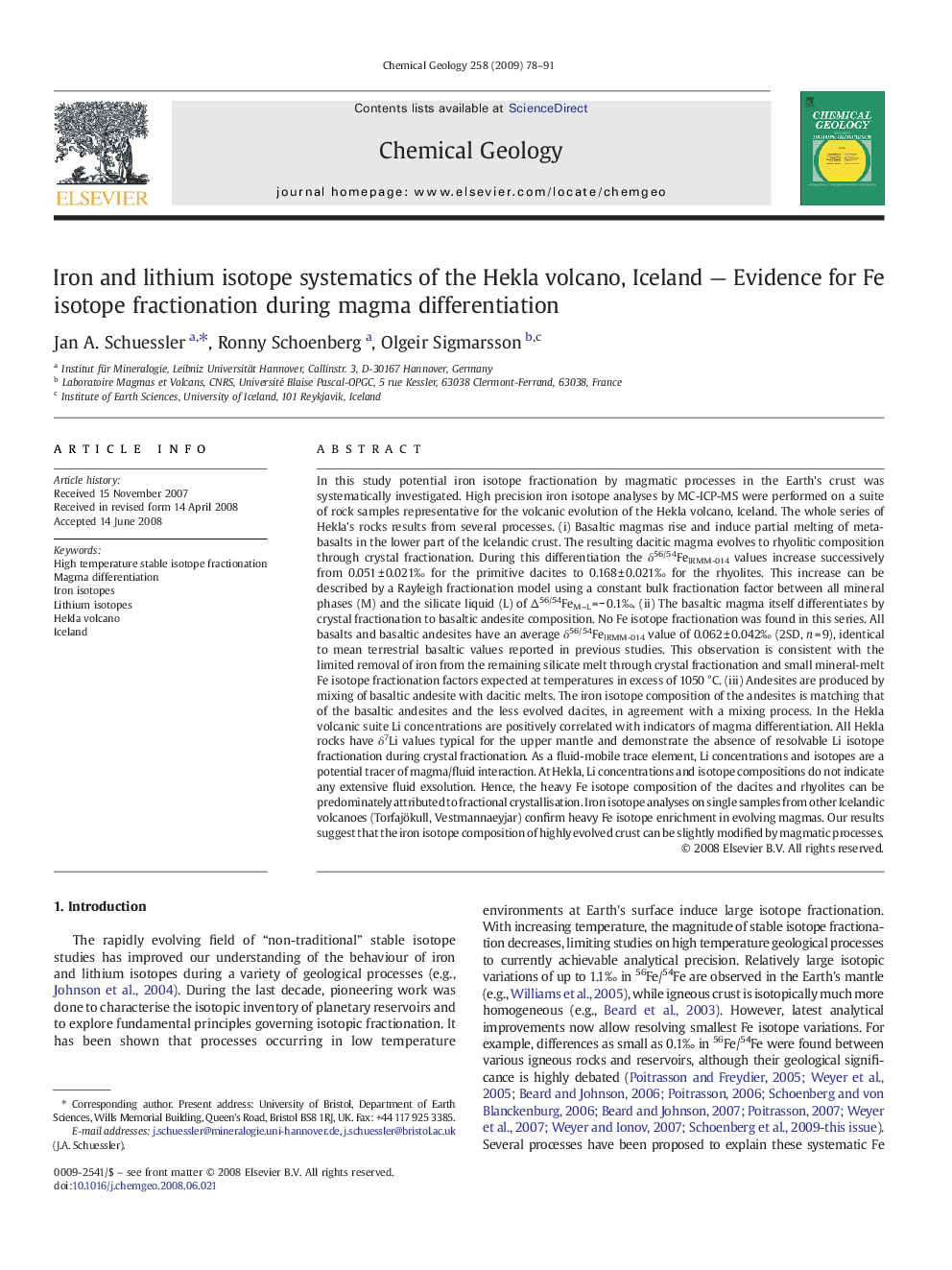| کد مقاله | کد نشریه | سال انتشار | مقاله انگلیسی | نسخه تمام متن |
|---|---|---|---|---|
| 4700613 | 1637716 | 2009 | 14 صفحه PDF | دانلود رایگان |

In this study potential iron isotope fractionation by magmatic processes in the Earth's crust was systematically investigated. High precision iron isotope analyses by MC-ICP-MS were performed on a suite of rock samples representative for the volcanic evolution of the Hekla volcano, Iceland. The whole series of Hekla's rocks results from several processes. (i) Basaltic magmas rise and induce partial melting of meta-basalts in the lower part of the Icelandic crust. The resulting dacitic magma evolves to rhyolitic composition through crystal fractionation. During this differentiation the δ56/54FeIRMM-014 values increase successively from 0.051 ± 0.021‰ for the primitive dacites to 0.168 ± 0.021‰ for the rhyolites. This increase can be described by a Rayleigh fractionation model using a constant bulk fractionation factor between all mineral phases (M) and the silicate liquid (L) of Δ56/54FeM–L = − 0.1‰. (ii) The basaltic magma itself differentiates by crystal fractionation to basaltic andesite composition. No Fe isotope fractionation was found in this series. All basalts and basaltic andesites have an average δ56/54FeIRMM-014 value of 0.062 ± 0.042‰ (2SD, n = 9), identical to mean terrestrial basaltic values reported in previous studies. This observation is consistent with the limited removal of iron from the remaining silicate melt through crystal fractionation and small mineral-melt Fe isotope fractionation factors expected at temperatures in excess of 1050 °C. (iii) Andesites are produced by mixing of basaltic andesite with dacitic melts. The iron isotope composition of the andesites is matching that of the basaltic andesites and the less evolved dacites, in agreement with a mixing process. In the Hekla volcanic suite Li concentrations are positively correlated with indicators of magma differentiation. All Hekla rocks have δ7Li values typical for the upper mantle and demonstrate the absence of resolvable Li isotope fractionation during crystal fractionation. As a fluid-mobile trace element, Li concentrations and isotopes are a potential tracer of magma/fluid interaction. At Hekla, Li concentrations and isotope compositions do not indicate any extensive fluid exsolution. Hence, the heavy Fe isotope composition of the dacites and rhyolites can be predominately attributed to fractional crystallisation. Iron isotope analyses on single samples from other Icelandic volcanoes (Torfajökull, Vestmannaeyjar) confirm heavy Fe isotope enrichment in evolving magmas. Our results suggest that the iron isotope composition of highly evolved crust can be slightly modified by magmatic processes.
Journal: Chemical Geology - Volume 258, Issues 1–2, 15 January 2009, Pages 78–91